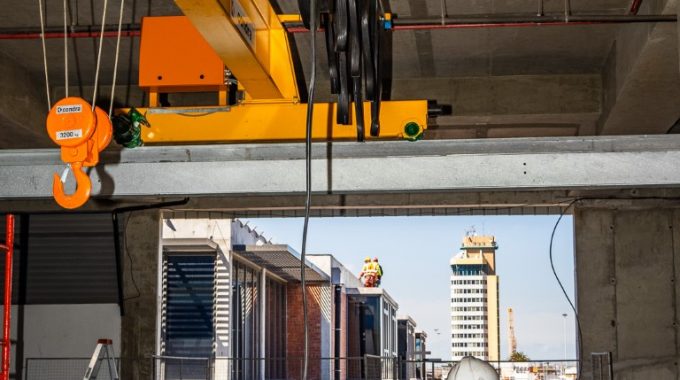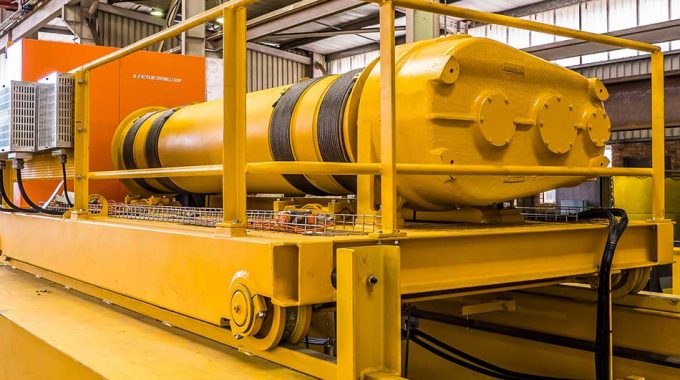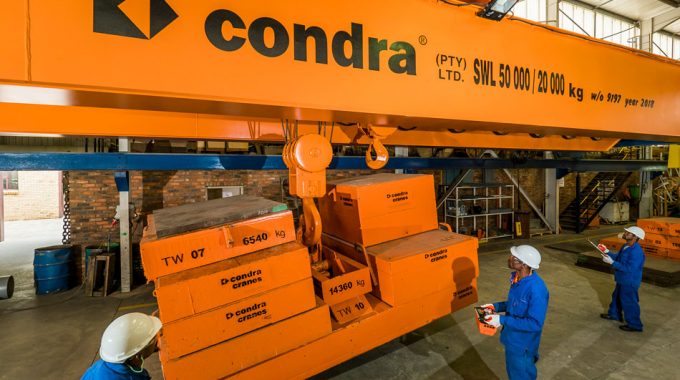COMPACT CRANES GO UNDERGROUND
Condra has won the crane and hoist order for Mupani Mine, one of several Zimplats operations in the mineral rich Hartley Geographical Complex, Zimbabwe.
Situated southwest of Harare, the capital city, Mupani is undergoing an upgrade to replace production at Rukodzi and Ngwarati mines, and part of Mupfuti Mine. These are projected to deplete over the next six years.
The order for the lifting equipment was placed on Condra by Australian consulting and project management company Worley. It comprises thirteen machines for installation underground: two workshop-duty double-girder electric overhead travelling cranes, a jib crane for ore transfer, and ten short-headroom hoists for miscellaneous functions.
All units have been designed for ease of transportation within the confines of a two kilometre-long underground access route. When manufacture is complete, only the short-headroom hoists will ship without being dismantled. The 5 ton jib crane, 10 ton overhead crane and sister 30-ton machine will first be extensively disassembled to enable mine tunnel navigation. Crane girders will be separated from end carriages and crabs, while the crabs themselves will ship minus their hoists for the same reason.
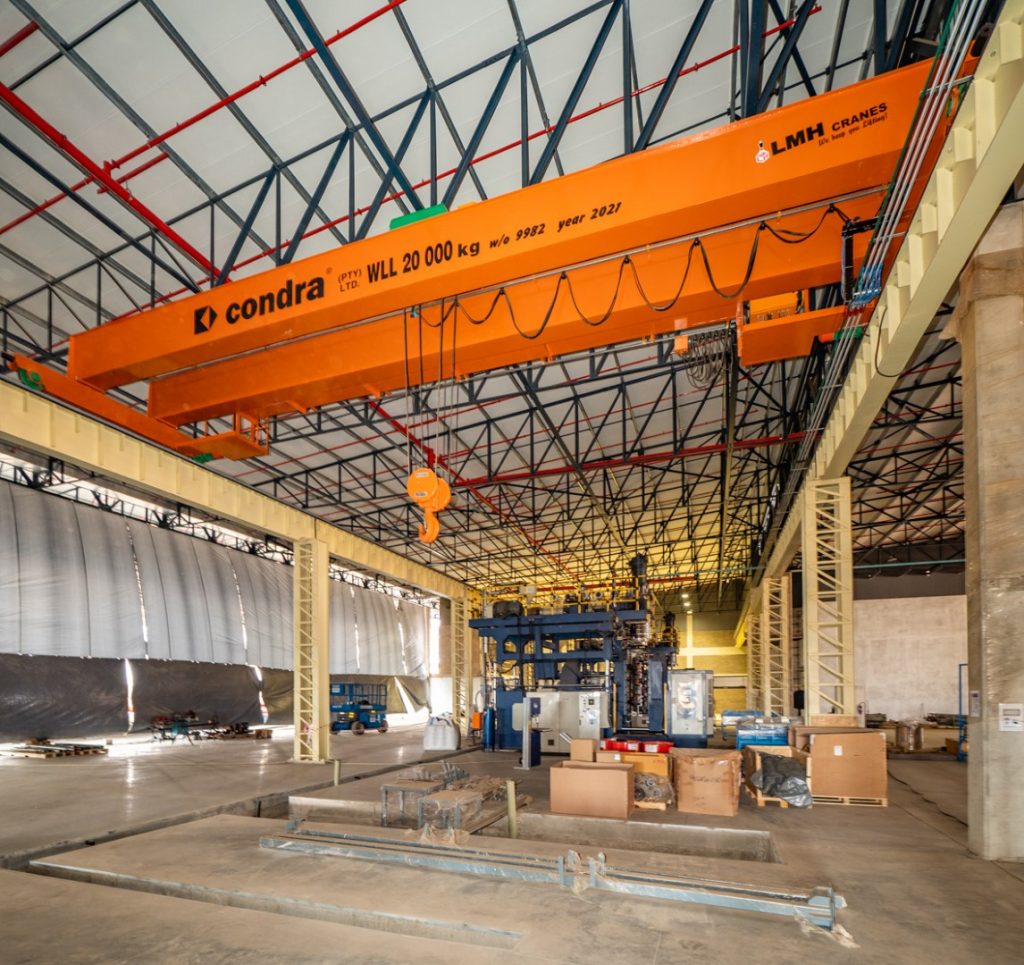
All three cranes are already under manufacture at Condra’s Germiston works. The hoists are being assembled to specification at the same factory.
After delivery, underground installation on gantries supplied by the mine will be executed by Worley technical teams using chain-blocks attached to rock bolts reinforcing the hanging walls.
Industry observers point to Condra’s competitive pricing and a willingness to adapt design to customer-specified dimensions as factors likely to have helped close the Worley order. Crane adaptation is often more difficult and more expensive for rival firms because of the need to import parts.
Additional factors in Condra’s favour are thought to have been robust design and a long pedigree of reliable performance in underground mining environments.
The company’s engineers designed the Mupani overhead cranes to suit reduced installation dimensions aimed at minimising blasting and excavation not directly associated with ore removal. Compacted to fit within these confined operating spaces, the cranes can nevertheless deliver the lifting heights required by the customer.
Notable features include variable-speed drives along all axes, and motors with silumin rotors in place of the more common aluminium castings to achieve higher torques. All motors will be protected against seepage by weather covers.
Control of the cranes is by radio remote, while the short-headroom hoists will be supplied with pendants.
Johannesburg-based Condra has an association with African mines going back more than 50 years. Reliable crane design well suited to mining is supported by an extensive network of service support and spare parts delivery. Prices are kept competitive by a locally manufactured spares and components content claimed to be the highest of any overhead crane supplier in central and southern Africa.
Research and development at the company is ongoing and includes a commitment to environmental improvement. Design engineers are currently researching the effect of different rotor and rotor winding configurations – silumin among them – on motor torque and efficiency, the aim being to contribute to environmental improvement by reducing energy input requirements.
The company has also installed solar panels at its Germiston factory to provide an estimated 70 percent of the electricity requirement. Cape Town works is soon to follow suit.
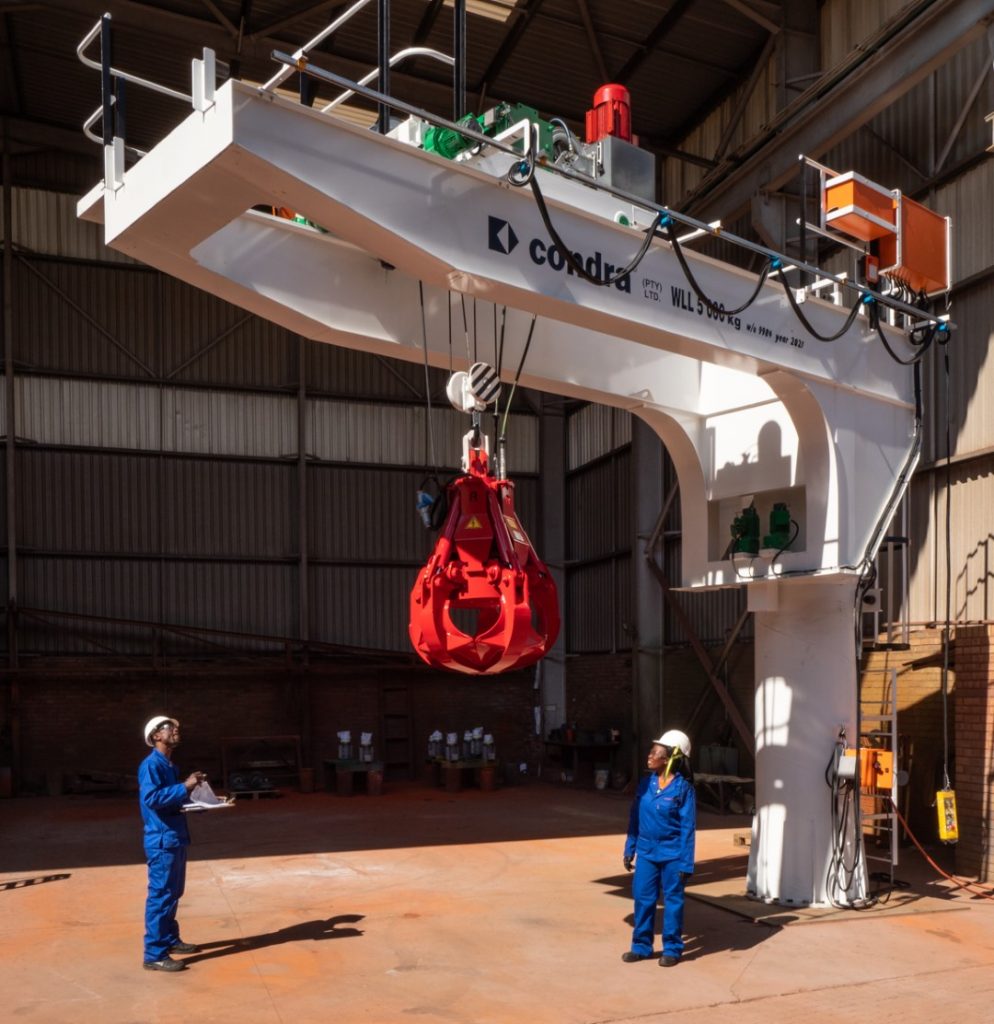
Situated southwest of Harare, the capital city, Mupani is undergoing an upgrade to replace production at Rukodzi and Ngwarati mines, and part of Mupfuti Mine. These are projected to deplete over the next six years.
The order for the lifting equipment was placed on Condra by Australian consulting and project management company Worley. It comprises thirteen machines for installation underground: two workshop-duty double-girder electric overhead travelling cranes, a jib crane for ore transfer, and ten short-headroom hoists for miscellaneous functions.
All units have been designed for ease of transportation within the confines of a two kilometre-long underground access route. When manufacture is complete, only the short-headroom hoists will ship without being dismantled. The 5 ton jib crane, 10 ton overhead crane and sister 30-ton machine will first be extensively disassembled to enable mine tunnel navigation. Crane girders will be separated from end carriages and crabs, while the crabs themselves will ship minus their hoists for the same reason.

Typical Condra double-girder overhead crane (not for Zimplats)
All three cranes are already under manufacture at Condra’s Germiston works. The hoists are being assembled to specification at the same factory.
After delivery, underground installation on gantries supplied by the mine will be executed by Worley technical teams using chain-blocks attached to rock bolts reinforcing the hanging walls.
Industry observers point to Condra’s competitive pricing and a willingness to adapt design to customer-specified dimensions as factors likely to have helped close the Worley order. Crane adaptation is often more difficult and more expensive for rival firms because of the need to import parts.
Additional factors in Condra’s favour are thought to have been robust design and a long pedigree of reliable performance in underground mining environments.
The company’s engineers designed the Mupani overhead cranes to suit reduced installation dimensions aimed at minimising blasting and excavation not directly associated with ore removal. Compacted to fit within these confined operating spaces, the cranes can nevertheless deliver the lifting heights required by the customer.
Notable features include variable-speed drives along all axes, and motors with silumin rotors in place of the more common aluminium castings to achieve higher torques. All motors will be protected against seepage by weather covers.
Control of the cranes is by radio remote, while the short-headroom hoists will be supplied with pendants.
Johannesburg-based Condra has an association with African mines going back more than 50 years. Reliable crane design well suited to mining is supported by an extensive network of service support and spare parts delivery. Prices are kept competitive by a locally manufactured spares and components content claimed to be the highest of any overhead crane supplier in central and southern Africa.
Research and development at the company is ongoing and includes a commitment to environmental improvement. Design engineers are currently researching the effect of different rotor and rotor winding configurations – silumin among them – on motor torque and efficiency, the aim being to contribute to environmental improvement by reducing energy input requirements.
The company has also installed solar panels at its Germiston factory to provide an estimated 70 percent of the electricity requirement. Cape Town works is soon to follow suit.

Typical Condra jib crane (not for Zimplats)
